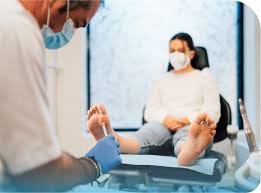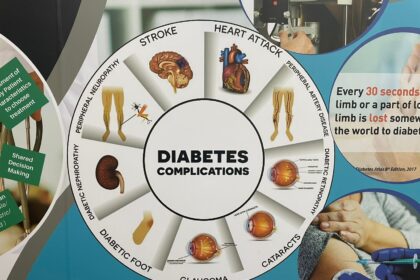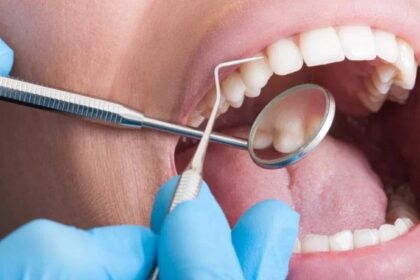Muscle recovery is a crucial aspect of any fitness journey, particularly for athletes, bodybuilders, or individuals engaging in intense physical training. With the growing interest in recovery-enhancing compounds, BPC 157 benefits have become a topic of increasing curiosity. Known for its regenerative properties, BPC 157 is now widely discussed as a possible game-changer for post-workout healing and performance optimization.
BPC 157, or Body Protection Compound 157, is a synthetic peptide derived from a naturally occurring protein found in human gastric juice. Unlike standard supplements that aim to mask pain or reduce inflammation temporarily, BPC 157 targets the root of the issue, promoting cellular regeneration, angiogenesis (the formation of new blood vessels), and overall tissue repair. Athletes and fitness enthusiasts seeking post-exercise recovery solutions are starting to recognize this peptide as a powerful option.
How Does BPC 157 Work?
The primary mechanism behind BPC 157 is its ability to accelerate the body’s healing process. It interacts with various growth factors and signaling pathways involved in tissue repair, including the vascular endothelial growth factor (VEGF) and nitric oxide systems. These pathways are essential for rebuilding damaged tissues, reducing inflammation, and restoring blood flow — all of which are crucial after intense training sessions.
By promoting blood vessel growth and improving circulation, BPC 157 delivers nutrients and oxygen more effectively to damaged areas, enhancing the recovery timeline and reducing downtime between workouts.
BPC 157 and Muscle Recovery
So, how does this peptide specifically benefit post-workout muscle recovery? After intense physical exertion, your muscles experience microscopic tears that trigger inflammation and soreness. While this is a normal part of muscle-building, the time required for repair can limit training frequency and performance.
Here’s how BPC 157 may aid in muscle recovery:
- Speeds up healing of micro-tears: The peptide supports rapid cellular repair, reducing muscle soreness and damage.
- Reduces inflammation: BPC 157 is known to reduce pro-inflammatory cytokines, resulting in reduced post-exercise stiffness.
- Improves blood flow: By enhancing angiogenesis, BPC 157 increases nutrient and oxygen delivery, which is essential for tissue regeneration.
- Supports tendon and ligament recovery: It doesn’t only focus on muscles — tendons and connective tissues benefit too, which helps prevent injury.
- May prevent overtraining injuries: Faster recovery means you’re less likely to experience strain-related injuries from frequent workouts.
These properties make BPC 157 particularly appealing to athletes engaged in high-intensity interval training (HIIT), weightlifting, martial arts, or endurance sports, where recovery time can significantly impact performance.
Clinical and Anecdotal Evidence
While BPC 157 has been extensively studied in animal models, human clinical trials are still in their early stages of development. However, the data from rodent studies has been promising. In rats, BPC 157 accelerated the healing of torn muscles, crushed nerves, and even tendon-to-bone injuries. This regeneration occurred without any noticeable side effects, adding to the peptide’s appeal.
Anecdotally, athletes using BPC 157 have reported faster recovery times, improved muscle flexibility after training, and a notable decrease in delayed-onset muscle soreness (DOMS). Some users even combine BPC 157 with other recovery aids, such as collagen peptides or magnesium supplements, to create a comprehensive recovery protocol.
How to Use BPC 157 for Recovery?
BPC 157 is most commonly available as an injectable or oral supplement, although injections are considered more bioavailable. Users typically inject the peptide subcutaneously near the injured or sore area for targeted results.
A common dosage range is 200–500 mcg per day, often split into two doses, for a cycle lasting 2–4 weeks. Always consult with a medical professional or sports therapist before beginning any peptide regimen, especially if you have underlying health conditions or are taking other medications.
Is BPC 157 Safe?
Safety is a top concern for any new supplement, and while BPC 157 shows a high safety margin in animal models, more human studies are needed. That said, users report minimal side effects, with occasional dizziness or mild nausea being the most noted.
It’s essential to ensure you’re getting BPC 157 from a trusted source, as purity and formulation can significantly impact efficacy and safety. Avoid underground or unverified suppliers to minimize risk.
Final Thoughts
For individuals serious about fitness and athletic performance, recovery is just as important as training. BPC 157 presents a compelling option for individuals seeking to reduce recovery time, enhance muscular resilience, and prevent overuse injuries. While more research is still needed to confirm its full effects in humans, the early results and user feedback suggest that BPC 157 could be a valuable tool in any athlete’s recovery toolkit.









